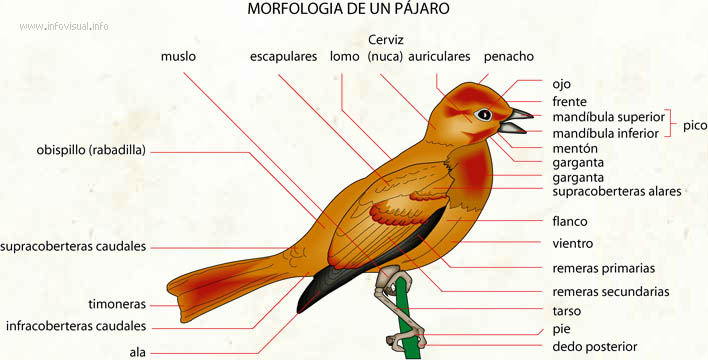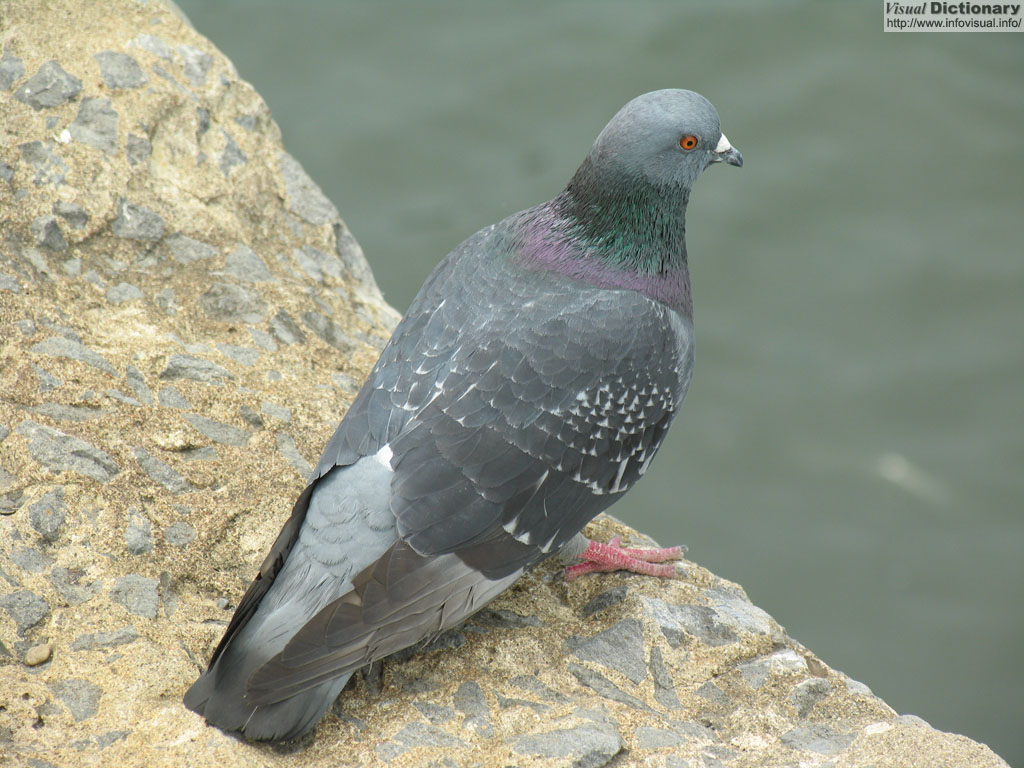Pájaro

Muslo: parte superior de la pata.
Escapulares: son las plumas del omoplato.
Lomo: parte trasera del tórax.
Cerviz (nuca): parte trasera del cuello.
Auriculares: parte de la cabeza relativo al oreja.
Penacho: parte superior de la cabeza.
Ojo: órgano de la vista.
Frente: parte superior de la cara.
Mandíbula superior: parte superior del pico.
Mandíbula inferior: parte inferior del pico.
Pico: conjunto que uñe las mandíbulas superior y inferior.
Mentón: parte inferior de la cara.
Garganta: parte anterior del cuello.
Pechuga: parte anterior del tórax.
Supracoberteras alares: parte superior de las alas.
Flanco: parte lateral del cuerpo.
Vientro: parte delantera del abdomen.
Remeras primarias: son las primeras plumas grandes con que terminan las alas.
Remeras secundarias: son las plumas grandes situadas más cercanas al cuerpo.
Tarso: parte de la pata situado trasera del muslo.
Pie: parte de la pata situado a su extremo.
Dedo posterior: apéndice articulado trasero.
Ala: miembro de locomoción para volar.
Infracoberteras caudales: son las plumas bajo de la cola.
Timoneras: son las plumas que forman la cola.
Supracoberteras caudales: son las plumas encima de la cola.
Obispillo (rabadilla): saliente del extremo del lomo.
Foto :

Pigeons and doves constitute the family Columbidae within the order Columbiformes, which include some 300 species of near passerine birds. In general parlance the terms "dove" and "pigeon" are used somewhat interchangeably. In ornithological practice, there is a tendency for "dove" to be used for smaller species and "pigeon" for larger ones, but this is in no way consistently applied, and historically the common names for these birds involve a great deal of variation between the term "dove" and "pigeon." This family occurs worldwide, but the greatest variety is in the Indomalaya and Australasia ecozones. The young doves and pigeons are called "squabs.". Pigeons and doves are stout-bodied birds with short necks and short slender bills with a fleshy cere.
The species commonly referred to just as the "pigeon" is the feral Rock Pigeon, common in many cities. Doves and pigeons build relatively flimsy nests from sticks and other debris, which may be placed in trees, on ledges, or on the ground, depending on species. They lay one or two eggs, and both parents care for the young, which leave the nest after 7 to 28 days. Doves feed on seeds, fruit and plants. Unlike most other birds (but see flamingo), the doves and pigeons produce "crop milk," which is secreted by a sloughing of fluid-filled cells from the lining of the crop.